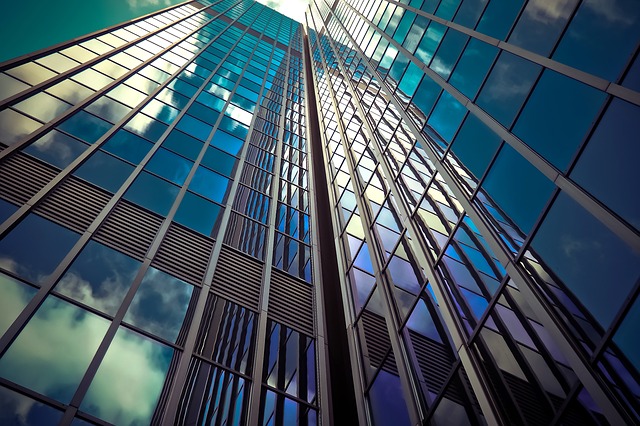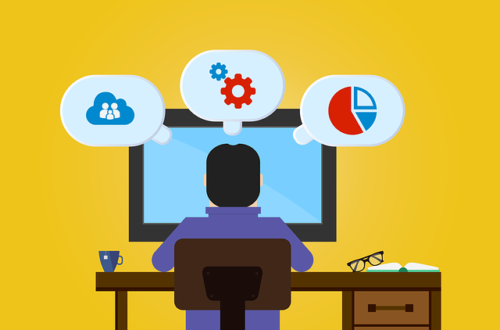Building Productivity – How Design Affects How Much We Get Done

The effects of great building design are countless. It can be inspirational, practical, and controversial. It can make us think, it can make us talk, and there’s a lot to suggest that it can actually make us work harder too.
While our productivity is tied into a wide array of factors both personal and extraneous, it seems that the design of the spaces we spend time in can have a direct impact on our focus, energy levels, and overall productivity. But how? Which factors of building design have this effect, and how can we use this knowledge to our advantage?
Designing With Wellbeing in Mind
Productivity is closely linked with our overall wellbeing. Put simply, if we don’t feel well, we don’t work well, and when it comes to our health, the buildings we live and work in can have a significant and direct impact. There are a number of ways that building design relates to wellness, but it’s arguable that the areas that are most closely associated with productivity are light and air quality.
Light
Anyone who has spent time working in an office with no window – particularly during winter months when sunlight is a scarce resource – knows how much of an effect a lack of light can have on how we feel. With a scientifically supported link between how much natural light we get and our overall productivity, the case is clear for making natural light a key priority in building design.
A lack of natural light can disrupt our circadian rhythms, and throw our sleep patterns out of kilter – the result being that we struggle to find energy and focus at work. Similarly, a dependence on artificial lighting can have a negative effect on our eyesight, causing strain and headaches (particularly if our work involves looking at a computer screen for extended periods).
To combat this, architects and designers are now regularly working with structural glazing companies, who are finding ways to improve how much natural light our buildings provide – both in private homes (with more of us working from home than ever before) and corporate environments, by creating everything from innovative glass roofs to entire frameless glass walls.
Air Quality
While building design might make us think mainly of physical and aesthetic elements, there are other ways that interior spaces can impact our productivity, and air quality is a big deal. When we spend hours on end in the same room and space, we breathe an awful lot of air. If there are toxins and other pollutants present, our wellbeing and productivity can dip significantly.
A study conducted by teams at Harvard and Syracuse Universities in the US found that when it came to cognitive function, participants tested in ‘green’ conditions (where air quality was improved by better ventilation and reduced CO2 levels and emissions) outperformed participants in a ‘neutral’ environment by 61%. This rose, staggeringly, to more than a 100% improvement when ventilation was doubled.
These results suggest that by including ‘wellness architecture’ into our buildings (including everything from improved ventilation to entire ‘living walls’ made from toxin-absorbing foliage) we can actively improve how productive and focused we are.
Interior Designs
To imply that building design was a purely structural and architectural practice would be a reductionist viewpoint. Interior design elements like aesthetics, colour schemes, and acoustics can have an equally large effect on how productive we are at work and at home.
Colour
Different colour schemes could quite possibly improve or reduce our productivity. It might sound like the snake-oil sales pitch of a paint manufacturer, but there’s actually plenty of psychological theory backing this idea up. When choosing colours for office spaces and home working environments, using different colours might not just be an aesthetic concern; it could quite possibly help us work more productively.
Research at the University of Texas found that certain colours (such as beiges and greys) made women in particular experience feelings of sadness and depression, whereas purples and oranges had a similar effect on men. They concluded that ‘restful’ colours like blues and greens improved efficiency and focus, whereas yellows were more likely to trigger creative innovation.
Sound Quality
It might seem fairly self-explanatory, but noisy environments are distracting, and can lead to a significant drop in productivity. If your office space is loud, you’ll struggle to focus. It’s that simple. A well-designed working environment has areas for quiet or silent work, as well as areas that are a little noisier – sometimes a quick chat over a cup of coffee can provide some much-needed relief from the daily grind, and can boost your productivity afterwards.
By simply spacing working stations in such a way that we each have individual control over how much noise we’re exposed to, we can to some extent eliminate noise distractions. Using things like soundproofing, entirely silent areas can be created, which can lead to a much higher level of focus.
Final Thoughts
How productive we are isn’t controlled by one single thing, and will inevitably fluctuate from day to day. While this may be the case, it’s interesting to see the extent to which we could be able to influence our energy levels, and how well we’re able to focus, simply in the way we design the spaces in which we work.
As we move into an era of smart buildings and integrated workspaces, our knowledge of these issues is sure to deepen. The day may even come when the design elements we accept as standard today are seen as archaic and extensively counterproductive.
Would you like to receive similar articles by email?





